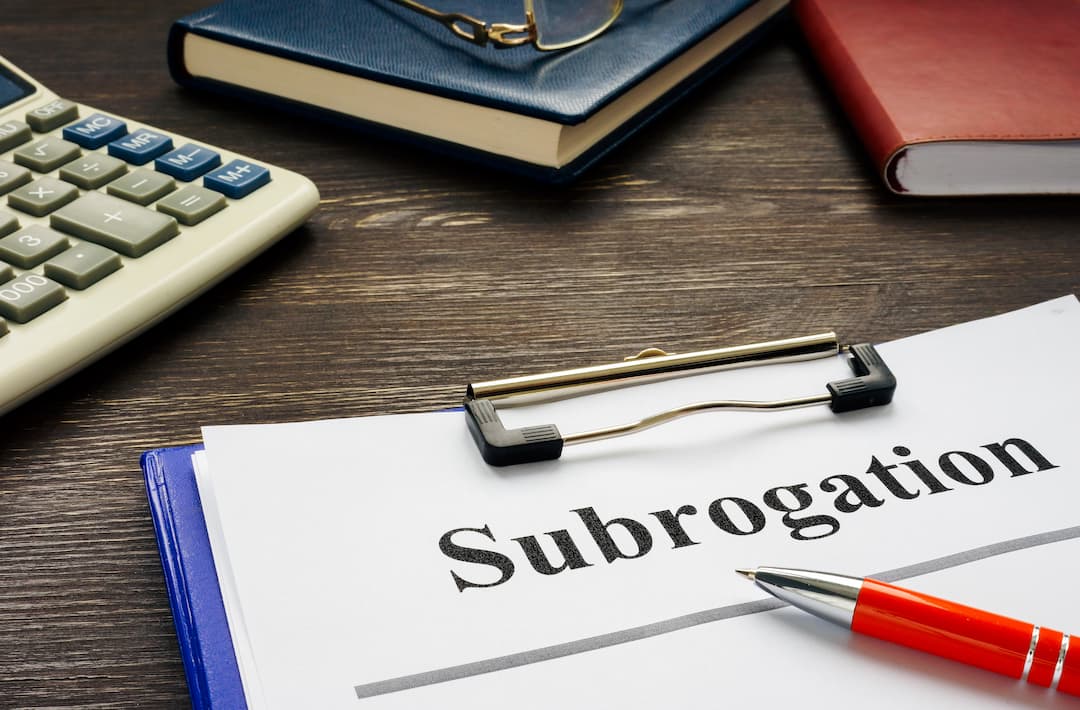Introduction
Subrogation claims are a cornerstone in the insurance sector, offering a legal avenue for insurance companies to seek reimbursement from the at-fault party for benefits paid out to policyholders. This guide aims to demystify the complexities surrounding subrogation claims, providing a roadmap for individuals ensnared in such circumstances.
Key Takeaways
- Definition: Subrogation claims are initiated by insurance companies to recoup benefits paid out to policyholders from the at-fault party.
- Importance: These claims ensure that the financial onus falls on the responsible party, protecting policyholders.
- Relevance in Personal Injury Cases: Subrogation often intersects with personal injury cases, making it a critical concept for claimants to grasp.
- Understanding Subrogation Claims: A Deep Dive
In the following segments, we will delve deeper into the mechanics of subrogation claims, explore their significance in personal injury cases, and offer practical advice on navigating these claims proficiently.
Understanding the Mechanism of Subrogation Claims
The Underlying Principle
Subrogation claims are predicated on a legal doctrine of substitution, where one party (the insurer) steps into the shoes of another (the insured) to seek reimbursement from the at-fault party, ensuring the rightful bearer of financial responsibility is held accountable.
Relevance in Personal Injury Cases
Subrogation claims often intertwine with personal injury cases, ensuring victims aren’t burdened financially.
- Initial Claim Settlement:
- Post-accident, victims may receive a settlement from their insurance company.
- Subrogation claims arise when the insurance company seeks reimbursement from the at-fault party.
- Legal Framework:
- Legal provisions governing the subrogation process emphasize the rightful claim of insurance companies to recover paid benefits.
- For more detailed insights, check the Investopedia page on subrogation.
Summary Table
Aspect Description Initial Settlement Victims receive a settlement post-accident. Subrogation Claim Initiated Insurance company seeks reimbursement. Legal Regulations Provisions ensuring rightful claim recovery.
Navigating Subrogation Claims
Practical Tips
Navigating subrogation claims can be intricate; hence, a detailed approach is pivotal.
- Consult with a Legal Professional: Subrogation claims reside in a complex legal domain. Engaging with a Personal Injury Attorney who is adept in subrogation and personal injury law can be a game-changer. They can provide invaluable insights, guide you through the legal maze, and advocate on your behalf against insurance companies and at-fault parties. Moreover, they can help you understand the implications of subrogation on your personal injury claim, ensuring you are well-informed every step of the way.
- Document Everything: Documentation is the backbone of any legal proceeding. It’s imperative to keep an exhaustive record of all communications, transactions, and medical bills related to the claim. This includes correspondence with insurance companies, receipts of medical expenses, repair bills, and any other relevant financial transactions. A well-documented case can significantly bolster your position, whether in negotiations or in a courtroom.
- Negotiate Assertively: Negotiation is an art and a skill, especially in the context of subrogation claims. Engaging in assertive negotiations can often lead to favorable settlements. It’s crucial to understand the full extent of your claim and to be prepared to advocate for a fair settlement. If negotiation isn’t your forte, having a legal professional by your side can be beneficial. They can negotiate on your behalf, ensuring that your interests are well-represented.
Conclusion
Subrogation claims play a crucial role in the insurance sector, ensuring the rightful party bears the financial responsibility. By comprehending the mechanism of subrogation claims and seeking proficient legal counsel, individuals can proficiently navigate these claims, ensuring fair reimbursement and justice.
Summary Table
Key Point Description Legal Consultation Seek professional guidance for claim navigation. Thorough Documentation Keep a detailed record of claim-related info. Assertive Negotiation Engage actively to reach a fair settlement.
Frequently Asked Questions
What is the underlying principle of Subrogation Claims?
The principle of substitution underpins subrogation claims, allowing the insurer to step into the shoes of the insured to seek reimbursement from the at-fault party.
How are Subrogation Claims initiated?
Subrogation claims are initiated post-accident, after the victims receive a settlement from their insurance company. The insurance company then seeks reimbursement from the at-fault party.
What legal regulations govern Subrogation Claims?
Legal provisions vary by jurisdiction but generally emphasize the rightful claim of insurance companies to recover paid benefits from the at-fault party.
How can individuals navigate Subrogation Claims?
Individuals can navigate subrogation claims by consulting with legal professionals, documenting all related communications and transactions, and negotiating assertively for a fair settlement.




